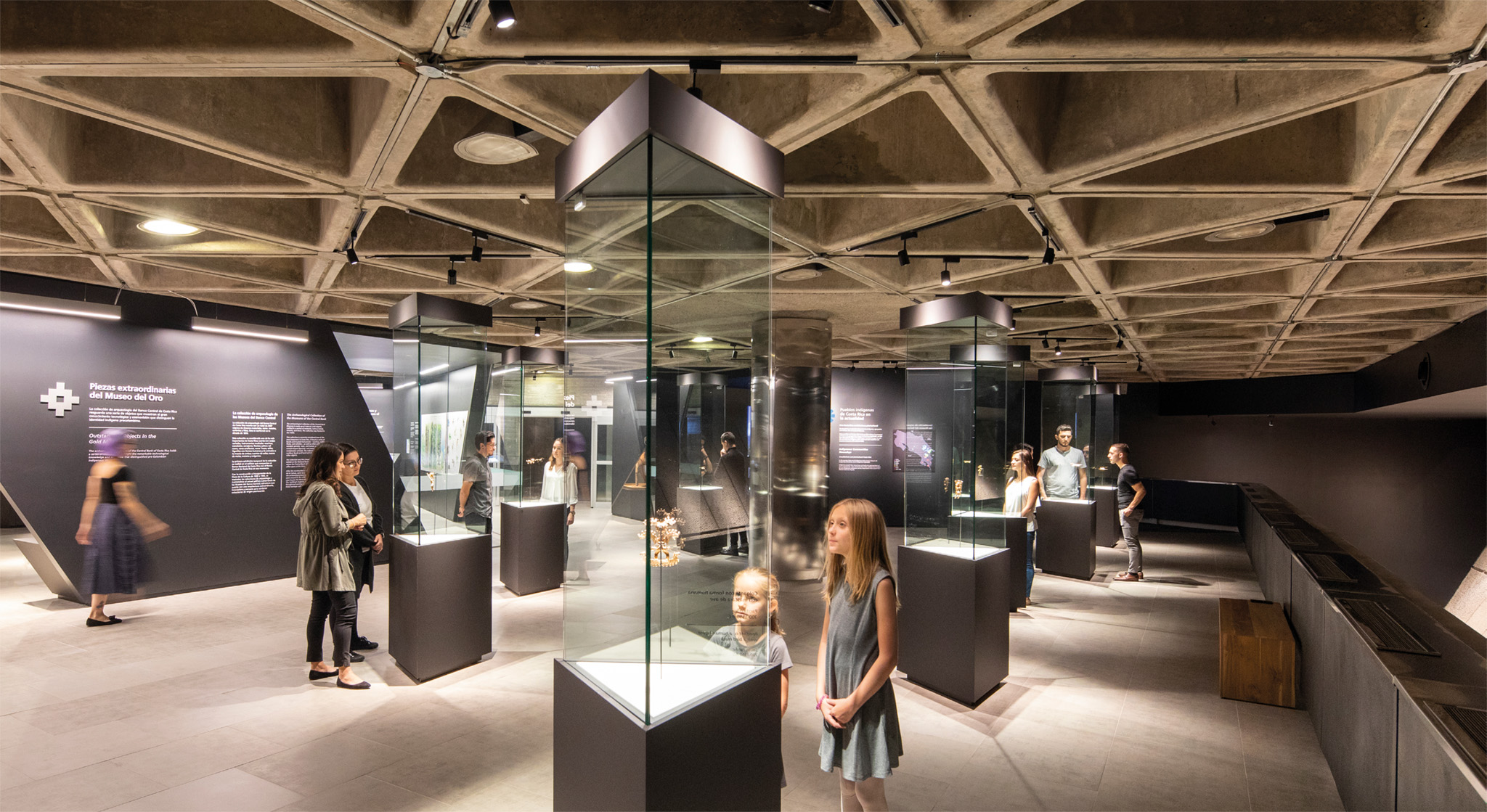Occupying the starkly modern subterranean space beneath the Plaza de la Cultura, the Museum of Pre-Columbian Gold has a dazzling display of ethnographic objects dating back to AD 500.

t All that glitters: visitors admiring the stunning pieces of pre-Columbian gold artifacts
Experience San José

t Dioramas and maps showing pre-Columbian cultures and settlements, and where to find them
The mainstay of the museum’s collection consists of more than 1,600 pieces of pre-Columbian gold. Archaeological evidence indicates that these objects first appeared in Costa Rica sometime between 300 and 500 AD, and became most prevalent from around 700 AD until Spanish contact in the 1500s. The majority of the items recovered in Costa Rica come from the South Pacific, where there is a wealth of natural gold and copper deposits in the region, but many were also found in the Central Caribbean. Most of the amulets, earrings, shamanic animal figures, and erotic statuettes exhibited here originated in southwest Costa Rica and attest to the sophisticated art of the Diquís culture. The uses and crafting of these items are demonstrated with the help of models and other displays, which also depict the social and cultural evolution of pre-Columbian cultures.
A spiral staircase descends to the second level of the building where visitors are given an introduction to pre-Columbian culture and metallurgy, as well as temporary exhibitions that are changed every four months. The third level features an auditorium as well as the main gallery, which displays a permanent exhibition of ancient gold items.
Did You Know?
The museum’s gold collection weighs 22,000 troy ounces – more than a ton.
Experience San José
Lost Wax Technique

Pre-Columbian groups, notably the Chibchas and Diquís of the Pacific southwest, were masterful goldsmiths, skilled in the use of the “lost wax” technique. In this technique, artists carve the desired form in wax, which is then molded with clay and baked. The wax melts, leaving a negative into which molten metal is poured to attain the required result. Most pre-Columbian pieces were alloys of gold and copper, with the alloy tumbaga being the most commonly used.
